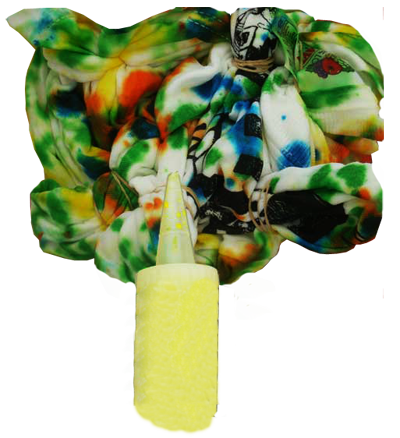


Colorize
The material to be dyed is first folded into a pattern, and tied or bound with string or rubber bands. Dye is then applied in such a way that it reaches only part of the area to which it is applied. The ties resist the penetration of dye, making tie-dyeing a form of resist dyeing. Designs are also formed by applying different colors of dyes to different sections of the fabric.
T-shirt in process of being tie-dyed at the Our Community Place Lawn Jam June 28, 2008 in Harrisonburg, Virginia.When reactive dyes are used, the folded and tied textile is usually treated with soda ash solution before dyeing, to prepare it to take the dyes, which may be applied while the fabric is still wet with this solution, or once it has dried. Soda ash, which has a high pH, prepares the cellulose fibers of the cloth for permanent chemical bonding with the fiber-reactive dye used in tie-dyeing. Alternatively, the soda ash may be added directly to the dye solution rather than used as a pre-treatment. With this technique the dye must be used within one or two hours, as the dye will react with the soda ash. In another variation, the fabric may be dyed, and then immersed in soda ash solution.
After sufficient time has been allowed for the reaction between dye and fiber to go to completion, depending on the temperature and the specific dye, the fabric is unwrapped, rinsed in cool water, and finally washed in hot water. A detergent called Synthrapol is preferred by many dyers, although any neutral detergent may be used. During tie-dyeing, if a good fiber reactive dye is used, a chemical reaction takes place which permanently bonds the colorful dye to the fabric, making tie-dye safe to wash along with other clothing once the excess dye has been removed.